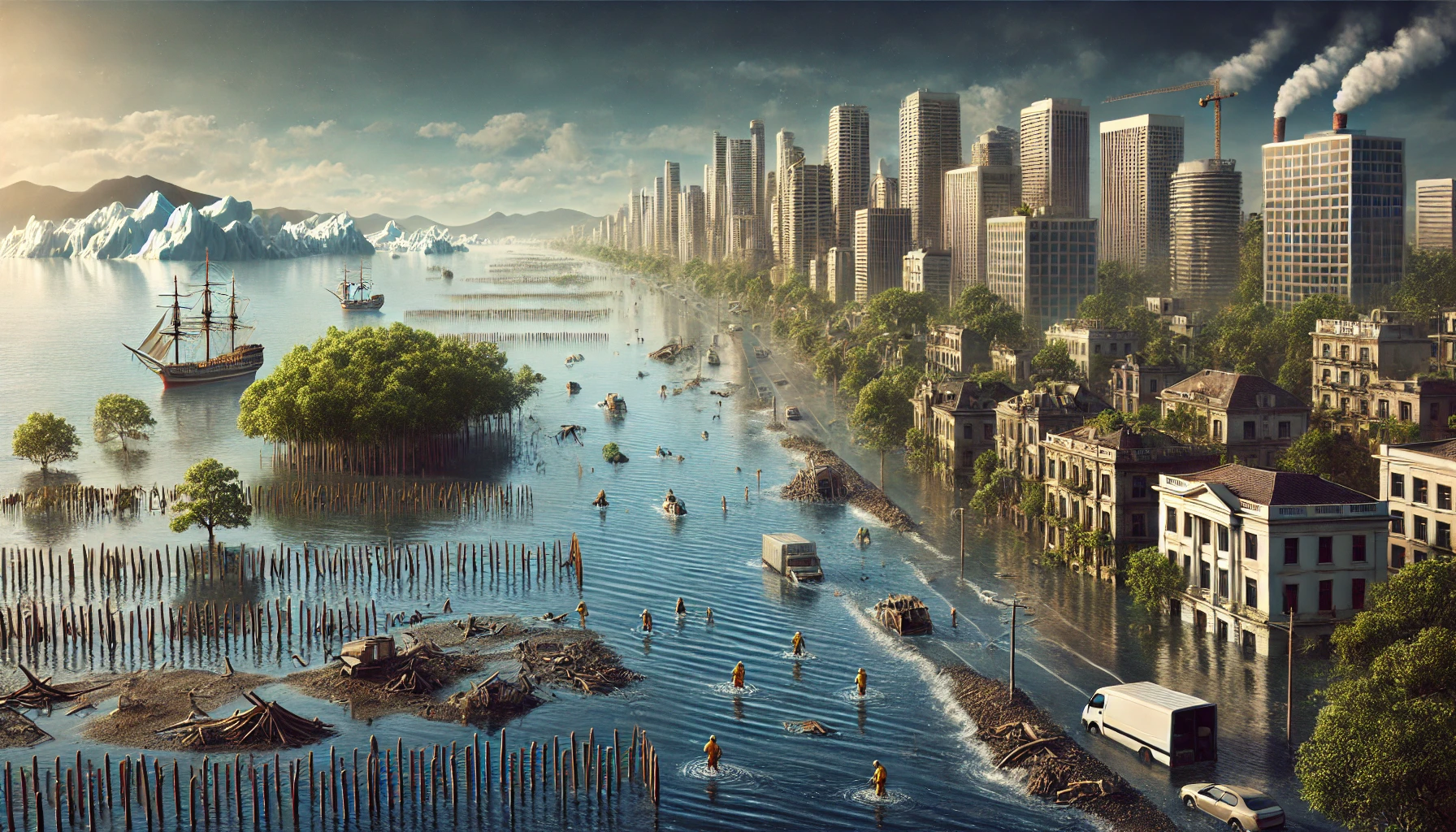Rising sea levels are one of the most visible and alarming impacts of climate change. With global temperatures increasing due to greenhouse gas emissions, polar ice caps and glaciers are melting at unprecedented rates, leading to higher sea levels. This phenomenon poses significant threats to coastal communities, ecosystems, and economies worldwide.
The Causes of Rising Sea Levels
- Melting Polar Ice Caps and Glaciers
Warmer temperatures are accelerating the melting of ice in regions like Greenland and Antarctica, contributing significantly to sea-level rise. - Thermal Expansion
As oceans absorb heat from the atmosphere, water expands, further elevating sea levels. - Land Ice Loss
The melting of mountain glaciers and ice sheets adds to the volume of water in the oceans.
Implications of Rising Sea Levels
- Coastal Flooding
Low-lying areas and island nations are at risk of being submerged, displacing millions of people and destroying infrastructure. - Loss of Biodiversity
Coastal habitats, including mangroves and wetlands, are disappearing, threatening species that depend on these ecosystems. - Economic Impact
The cost of adapting to rising seas, including building sea walls and relocating communities, is projected to run into trillions of dollars globally. - Saltwater Intrusion
Rising sea levels cause saltwater to infiltrate freshwater sources, affecting agriculture and drinking water supplies.
At-Risk Regions
- Island Nations: Countries like the Maldives and Tuvalu are experiencing severe impacts and may become uninhabitable.
- Major Cities: Coastal cities like Miami, Jakarta, and Dhaka face frequent flooding and infrastructure challenges.
- Delta Regions: Areas like the Mekong Delta and Nile Delta are vulnerable to land loss and ecosystem disruption.
Solutions and Mitigation Strategies
- Emission Reductions
Drastic cuts in greenhouse gas emissions are crucial to slow the rate of sea-level rise. - Adaptation Measures
Building resilient infrastructure, restoring natural barriers like mangroves, and implementing flood management systems are essential. - Global Cooperation
International collaboration is needed to provide financial and technical support to the most affected regions.
The Call to Action
Rising sea levels are not just a distant concern—they are a present reality. Addressing this challenge requires a collective effort from governments, industries, and individuals to mitigate climate change and protect vulnerable communities.

